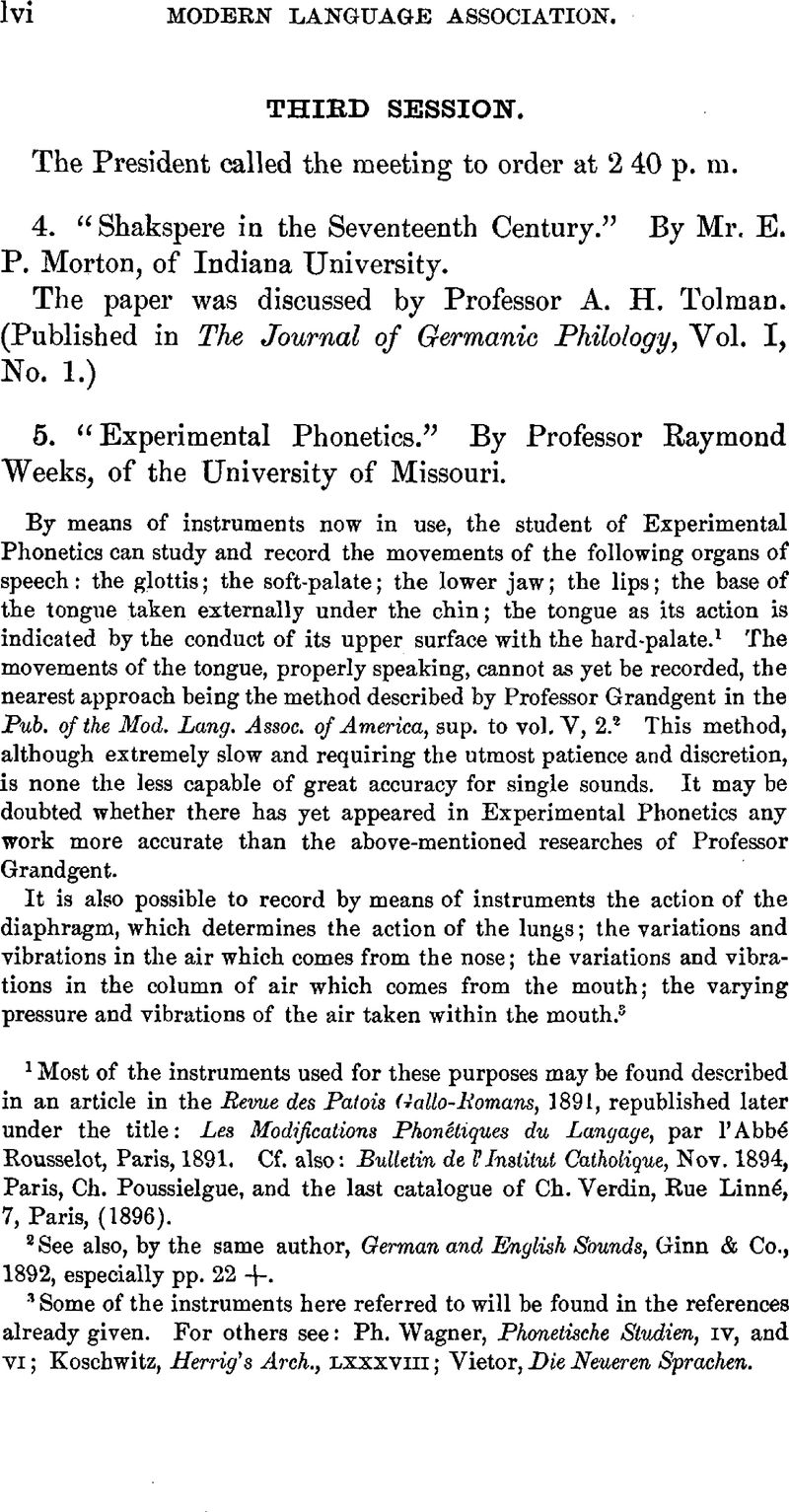No CrossRef data available.
Article contents
Third Session
Published online by Cambridge University Press: 02 December 2020
Abstract

Information
- Type
- The Central Division of the Modern Language Association of America
- Information
- Copyright
- Copyright © Modern Language Association of America, 1897
References
page lvi note 1 Most of the instruments used for these purposes may be found described in an article in the Revue des Patois Gallo-Romans, 1891, republished later under the title: Les Modifications Phonétiques du Langage, par l'Abbé Rousselot, Paris, 1891. Cf. also: Bulletin de l'Institut Catholique, Nov. 1894, Paris, Ch. Poussielgue, and the last catalogue of Ch. Verdin, Rue Linné, 7, Paris, (1896).
page lvi note 2 See also, by the same author, German and English Sounds, Ginn & Co., 1892, especially pp. 22 +.
page lvi note 3 Some of the instruments here referred to will be found in the references already given. For others see: Ph. Wagner, Phonetische Studien, iv, and vi; Koschwitz, Herrig's Arch., lxxxviii; Vietor, Die Neueren Sprachen.
page lvii note 1 It is reported that the French Chamber has passed an appropriation for establishing a fine laboratory at the Collège, de France, the Abbé Rousselot to be put in charge. This measure is due to the efforts of Gaston Paris and Michel Bréal. Dr. Rosapelly's address is, 10 Rue de Buci, Paris.
page lvii note 2 A short description of this instrument may be found in the Proc. Phil. Soc. of America, 1895; and also, together with certain experiments and their result, in the Année Psychologique, Première Année, Paris, 1895, Félix Alcan, p. 74.
page lviii note 1 In addition to this, the vowel i is recordable.
page lviii note 2 The record obtained is divided into segments which stand out clearly to the eye. These segments are the breath-groups, since each inhalation causes a movement of the index in the opposite direction from that of the consonants, which are expirations.
page lviii note 3 See Harvard Studies in Philology and Literature, vol. ii, 1893. Cf. H. Allen, On a new method of recording the motions of the soft-palate, Transactions of the College of Physicians, Philadelphia, 3 s., vol. iii. This method is simply that of Czermak, and is commented on by Techmer: Intern. Zeitschrift für allgenieine Sprachwiss., i, 501; ii, 287.

